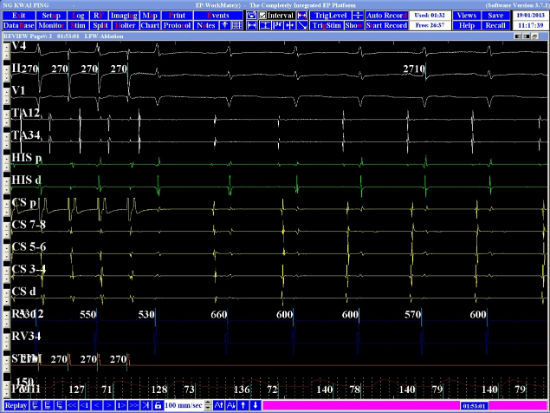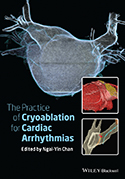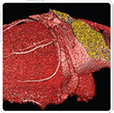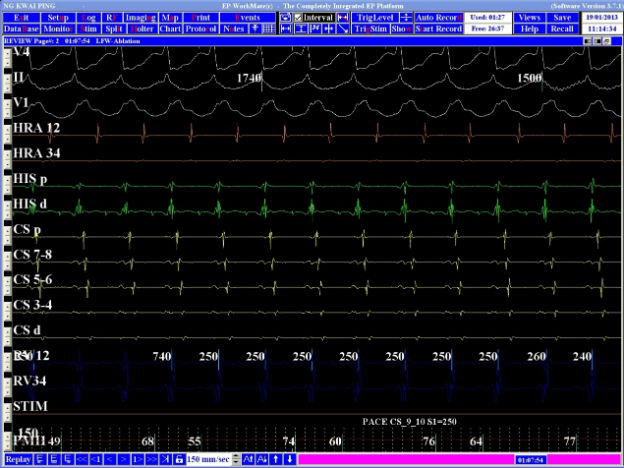A 62-year-old woman presented with recurrent paroxysmal palpitations for 10 years. Electrocardiogram documented supraventricular tachycardia (SVT). She was given Sotalol with refractory symptoms. A cardiac electrophysiology study revealed a concealed paraHisian accessory pathway with inducible orthodromic atrioventricular reciprocating tachycardia (Figure 1).
-
1. What would be the appropriate ablation strategy – radiofrequency ablation with a 4 mm tip catheter, cryoablation with a 4 mm tip catheter, cryoablation with a 6 mm tip catheter, or cryoablation with an 8 mm tip catheter?
Show Answer
Correct answer: Cryoablation with a 6 mm tip catheter. Treatment of paraHisian accessory pathway with radiofrequency ablation carries significant risk of inadvertent atrioventricular block and high recurrence rate. Catheter cryoablation has been reputed for its safety profile, especially a very low if not zero risk of inadvertent atrioventricular block. The function of cryomapping is available only for 4 and 6 mm tip catheters. In general, a larger lesion can be created with a 6 mm tip catheter compared with a 4 mm tip catheter. The former may thus result in a lower rate of recurrence.
A 6 mm tip cryocatheter was positioned at the paraHisian area. Cryomapping was performed by lowering the temperature of the catheter tip to -30°C.
-
2. What should be the criteria for successful cryomapping – termination of SVT, absence of inadvertent atrioventricular block, and/or loss of concealed paraHisian accessory pathway conduction, or all of the above?
Show Answer
Correct answer: Both termination of SVT and loss of concealed paraHisian accessory pathway conduction are evidence for appropriate target site. However, termination of SVT can be a nonspecific response to catheter manipulation. Loss of concealed paraHisian accessory pathway conduction during ventricular pacing remains the confirmatory endpoint for effective cryomapping. Apart from assessment of the effectiveness of cryoablation at the potential target site by cryomapping, it is even more important to look for risk of inadvertent atrioventricular block.
Cryomapping resulted in ventriculo-atrial dissociation, failure to induce SVT, and absence of inadvertent atrioventricular block (Figure 2). A permanent lesion was then delivered to the same site by lowering the temperature of the catheter tip to -75°C.

Figure 2




